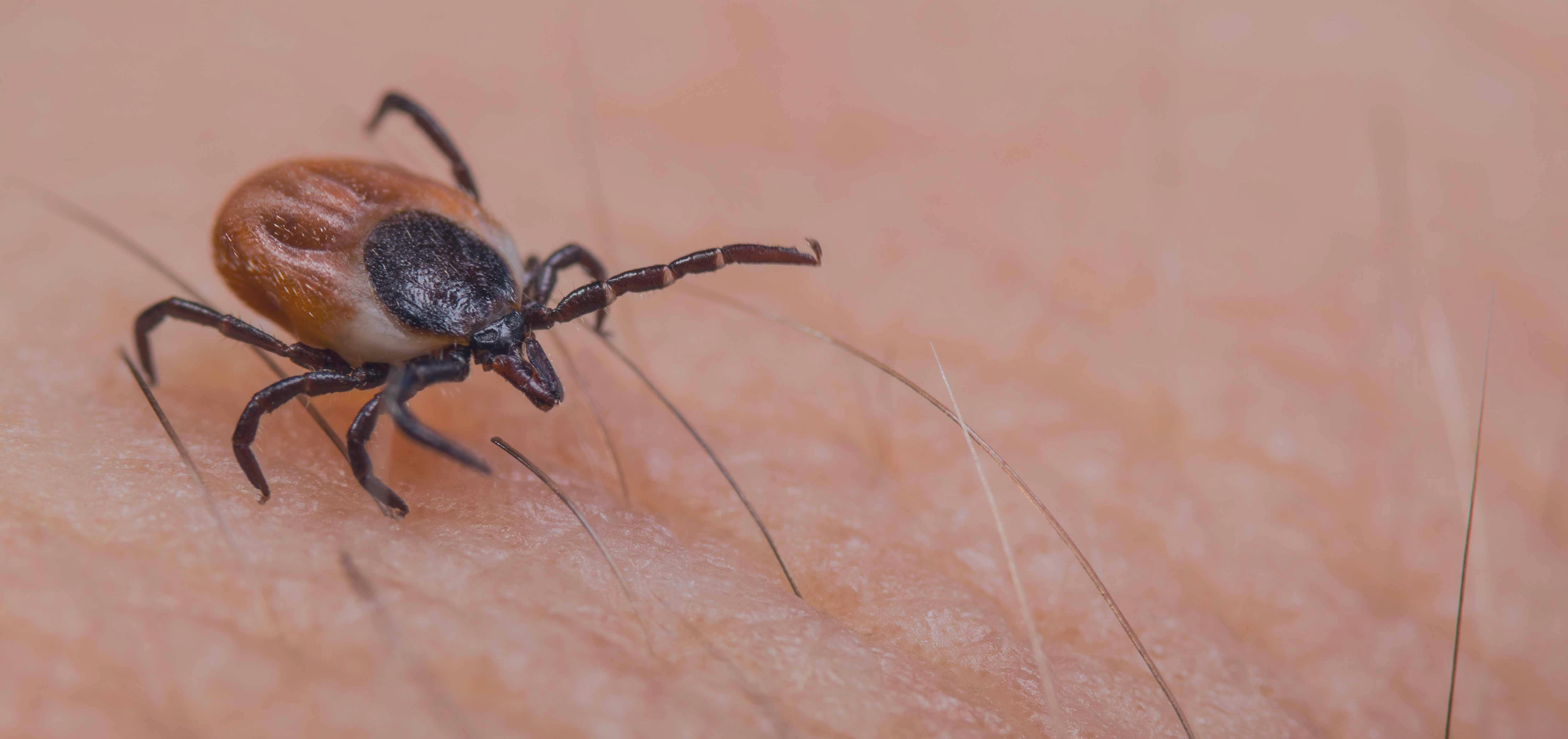Tick Bite


Introduction
Introduction
Ticks are particularly active in spring and autumn and thrive in warm and humid places. They mainly live in undergrowth, at the edges of forests and paths, and climb tall grasses where they lodge up to 1.5 metres above the ground. After finding a suitable site on a host, the tick inflicts a painless bite. Firmly anchored in the skin, it will then suck the host's blood for several days. In this way, ticks can inoculate pathogens such as those causing Lyme disease or tick-borne encephalitis (also called 'spring-summer meningoencephalitis').
Diseases
In Switzerland, ticks mainly transmit two infections: Lyme disease caused by a bacterium, and tick-borne encephalitis caused by a virus.
The risk of transmission of Lyme disease depends on how long the tick remains attached. If it is less than 24 hours, the risk of transmission is very low. Erythema migrans is the most common manifestation of Lyme disease, presenting as a redness that gradually enlarges with a clearing centre. Without treatment, only a minority of people will develop a disseminated form of the disease, potentially affecting the brain, joints, or skin.
Tick-borne encephalitis can occur when a virus is transmitted by the tick. About 10% of people will develop neurological symptoms, such as headaches or paralysis. Recovery takes several weeks, and some sequelae may persist.
What to do after a tick bite?
Grasp the tick at the base of the head and pull it out gradually, as close to the skin as possible using fine tweezers. Then disinfect the bite site. You should consult a doctor if redness appears at the bite site or if you experience flu-like symptoms.

Treatment
Treatment
When Lyme disease manifests as a skin lesion, antibiotics are an effective treatment.
The Vaccine
There is a vaccine against tick-borne encephalitis, but not against Lyme disease. The vaccination should be offered to anyone who regularly engages in outdoor activities in Switzerland (except Geneva and Ticino). A map can help you check if you live in a high-risk area (red zones).

To find out more
To find out more
You will find additional information on the Planète Santé website about Lyme disease and tick-borne encephalitis.
True / False?
Excerpt from the article “Diseases transmitted by ticks in 2019: between misconceptions and good practices” published in the Swiss Medical Journal. Authors: Robin Chenal, Bernard Favrat, Serge De Vallière.
Many misconceptions circulate about ticks...
Sometimes ticks fall from trees
False. They never fall from trees and cannot jump, but wait for their meal at the top of low vegetation at a height of up to 1.5 meters (tall grass, brush, shrubs) and cling to their prey as it passes by.
You need to “unscrew” the tick with tweezers to remove it from the skin
False. It is not recommended to perform a twisting motion when removing the tick, but to pull it gently with flat tweezers. If the rostrum (mouthpart) remains attached, it is also not recommended to extract it as the risk of developing Lyme disease is not increased, it generally causes no reaction and will be naturally expelled over time.
After a tick bite, the risk of developing Lyme disease remains relatively low
True. According to a study conducted in Switzerland, it can be concluded that out of 1000 people bitten by a tick, 45 (4.5%) will be infected by Borrelia burgdorferi but only 8 (0.8%) will develop an erythema migrans.
An erythema migrans can appear away from the bite area
False. The erythema migrans develops from the inoculation site and not away from it. After a bite, it remains advisable to monitor its appearance outside the bite area as detecting a tick increases the risk of other bites that may have gone unnoticed.
Erythema migrans is a mandatory step in the development of Lyme disease
False. It is the most frequent and earliest clinical manifestation, but it is estimated to be absent in 20-30% of Lyme disease cases, which then presents directly as a stage II manifestation sometimes only a few weeks after the bite.
The natural course of Lyme disease in stages I and II is generally spontaneously favourable
True. All the main manifestations of Lyme disease (erythema migrans, facial nerve paralysis, heart block, arthritis) improve over time, even in the absence of antibiotic treatment.
Serological tests are not reliable enough to diagnose Lyme disease
False. The recommendations of scientific societies are in agreement on this point. The diagnosis of a borrelia infection is based on specific criteria. In the presence of erythema migrans, the diagnosis is purely clinical and serology is contraindicated because it is often falsely negative. Outside of this situation, serology is necessary to support a presumptive diagnosis of Lyme disease in the presence of compatible objective clinical signs.